Tooth bleaching
What is tooth bleaching?
Tooth bleaching is the brightening of tooth shade using hydrogen peroxide, which disintegrates internal tooth pigment. Tooth bleaching should not be mistaken with tooth brushing using a whitening tooth paste and other similar products, where only the external pigment is removed, but the tooth itself does not get whiter; at best, it restores the actual shade of the tooth, i. e., like it was when it erupted.
How are teeth bleached? What is the process?
The most common and most effective bleaching methods are: At-home tooth bleaching. The dentist takes impressions to make tooth bleaching mouthguards. They are similar to sports mouthguards, but are a lot thinner, and have spaces for bleaching material. The dentist provides the patient syringes with the bleaching material, which goes into the mouthguards. The process is described in detail. The patient wears the bleaching mouthguards for 6 to 9 hours (usually during the night) for approx. 3 weeks. After bleaching, the result of tooth bleaching is evaluated. In our clinic, we use only Opalescence bleaching gel. In-office laser tooth bleaching. The dentist polishes the teeth using brush and paste or air-abrasion before the procedure. Gums are protected using special protective gel. High-concentration bleaching material is applied on the teeth, which is activated using the EPIC Biolase laser, the material is washed off, and the process is repeated 2 to 3 times. The whole procedure takes around 1.5 hours. The result of a single procedure is comparable to a week of at-home tooth bleaching.
What is the effectiveness of tooth bleaching?
Yellowish teeth are more susceptible to bleaching, compared to bluish or reddish teeth. Fillings and crowns do not bleach. After 3 to 4 years patients usually notice that their teeth have become darker. In that case, tooth bleaching may be repeated. However, repeated tooth bleaching requires less effort. We recommend patients to bleach their teeth to the brightest naturally occurring tooth shade, which is 1M1 in the most popular VITA 3D-MASTER shade guide.
Cosmetic bonding
What is cosmetic bonding?
It is a treatment method when filling materials are used to improve or create the perfect smile. Cosmetic bonding can be done on one tooth, several teeth, or all teeth. A part or whole tooth may be covered.
What materials are used for cosmetic dentistry?
A special malleable material called light-cured composite is used. Usually, 3 to 6 different composites are used to restore a single tooth during cosmetic bonding in order to create the required shades and visual effects. This way, the restorative materials allow to perfectly imitate the form, shade, and translucency of natural teeth. For cosmetic bonding, fillings are polished using 6-step polishing system and a revolutionary polishing paste Enamelize.
How much does such bonding cost?
Cosmetic dentistry is art. The price for a single tooth may cost from 119 EUR to 319 EUR. It depends on the scope and desired result.
How is a filling fixed to the tooth?
Cosmetic bonding is attached to the teeth using special adhesives. It is one of the advances of modern dentistry. The area is treated with a special solution to roughen it; then the adhesive is applied; afterwards, the filling is layered to the desired shape of the tooth.
How does cosmetic bonding differ from regular fillings?
In regular restorative work, a tooth cavity is filled to restore tooth function. However, cosmetic bonding is done to improve tooth position, shape, to mask discoloration or other defects. After cosmetic bonding, the margin between the tooth and the filling is imperceptible.
Esthetic ceramic veneers
Why do people choose veneers?
In the modern world, a beautiful smile is very important. It decorates the person and their life. A person who is happy with their smile, smiles more, is more communicative and more confident. In modern dentistry, veneers are the optimal method to create beautiful teeth and restore the confidence to smile.
What are ceramic veneers?
Ceramic veneers are a thin layer of ceramic that covers the front surface of the tooth. It is a bit like an artificial nail. Using veneers, one, several or all teeth may be restored. Veneers usually cover the whole front tooth surface. This allows to create smiles like in Hollywood. Nevertheless, your dentist will advise you not to choose overly white veneers; just bright enough so that the teeth look natural and healthy. Often veneers may be made without drilling any teeth. Over time, veneers do no darken. They are durable. Veneers allow us to achieve the best aesthetic results.

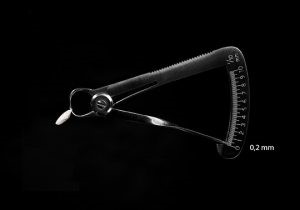
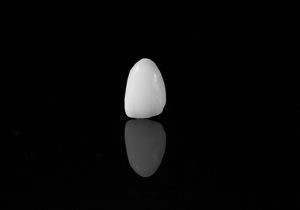

When are veneers recommended?
Veneers can improve the shade, surface texture, form, and position of your teeth. Using veneers, it is possible to match the color of your natural teeth very precisely, if only one tooth is discolored. Veneers are used to restore fractured/broken teeth. Veneers may be used to close gaps between the front teeth. If the patient declines orthodontic treatment, veneers may be used to create an attractive, even row of teeth.
What determines whether a veneer is durable and long-lasting?
The longevity of treatment is determined by the experience of the dentist and the dental technician, appropriate manufacturing method, and the material the veneer is made of. In our clinic Amicus Dentis, tooth veneers are manufactured to the highest standards, using materials from leading manufacturers and the latest methods by some of the best dental technicians in the country.
What is the process of the procedure?
A patient comes in for a consultation. During this consultation, the patient explains their wishes, the dentist performs a thorough examination, patient photos are taken. A treatment plan is made.
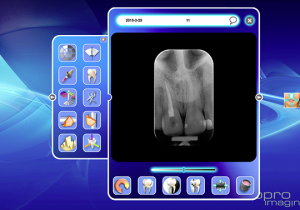



Doctor and patient examine the treatment plan in detail, by discussing tooth shape (compatibility with the patient’s face, age, height), shade, need for tooth bleaching, tooth surface, translucency, materials, manufacturing methods and other issues.
Then a model of the final veneers is ordered, so that on the second visit, before any work was done, the patient could try the planned veneers in the mouth using a special resin, to assess whether they would be satisfied with their new smile (2D and 3D planning).
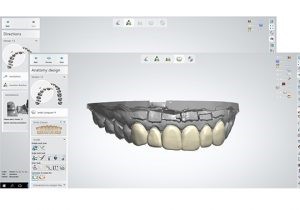

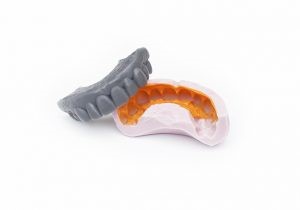



If the patient accepts the treatment, during a single visit, an impression is taken, so that the dental technician could manufacture the veneers. During the second visit, the manufactured veneers are tried in the mouth and glued to the teeth.

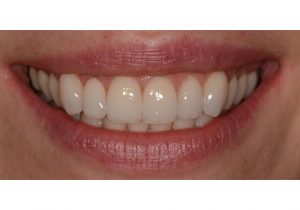
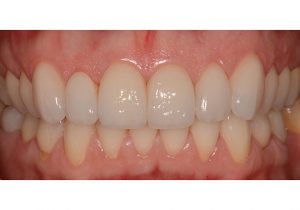

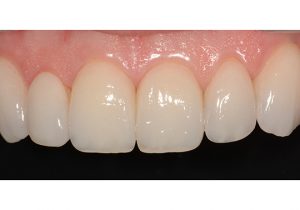

What types of veneers are there? How are they different?
The classification of veneers is a bit confusing. The veneers are grouped according to several criteria, the main being the method of manufacture and the material they are made of. Methods of manufacture: Milling/CAD/CAM (the veneers are made digitally on a computer, then they are milled from a block of ceramic). Pressing (the veneers are hand-molded, then pressed). Layering (the dental technician creates the veneer layer by layer, like a painting). Every case is different; however, the optimal method these days is often milling of pressing the internal layer of the veneer, and layering the external layer. This allows for the best combination of resistance and appearance. Layered veneers have the highest aesthetic qualities. Currently, the most common materials are: Feldspathic ceramic (by various manufacturers); lithium disilicate ceramic (IPS e.max by Ivoclar Vivadent).
Are provisional veneers needed between the visits?
If the tooth was prepared a lot, they are. They are made of filling material. This procedure is included in the price.
Do I need to visit my dentist after receiving veneers?
Your dentist will book an additional appointment to make sure they did everything correctly and that you are satisfied with the result.
What are the alternatives to tooth veneers?
Cosmetic bonding is done for small tooth corrections. Crowns are usually used for damaged teeth, where root canal treatment was done.
Are ceramic veneers durable?
Veneers last for many years; however, in rare cases they may break or crack, just like your own tooth. Then we need to redo the veneer. Nevertheless, ceramic veneers should last twice as long as cosmetic bonding.
Is it expensive?
High-quality veneers require a lot of precise work. It is a long-term investment in your health. This treatment method is quite expensive.
Would you like to see how smiles are made in our clinic Amicus Dentis?
Check out our smile gallery: Examples of our work.
Meet our cosmetic dentistry specialist:
Justina Jakutienė


Čia gimsta šypsenos... Amicus dentis
During the second visit, the manufactured veneers are tried in the mouth and glued to the teeth.


